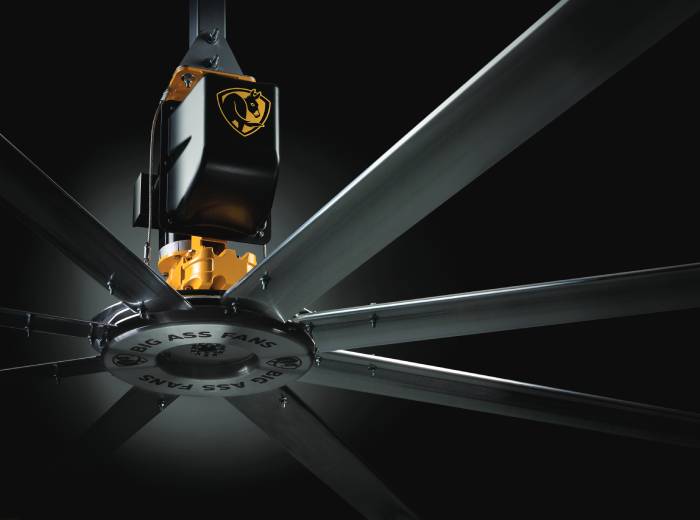
4 Safety Features to look out for in your next Industrial Fan
There are a lot of moving parts that go into the operation of an industrial fan, and this could cause a lot of concerns and safety issues for those who will need to work with them. We've compiled the concerns our customers have into this handy guide with practical ways to mitigate the chances of fans causing injury.
1. Forklift Strikes
Overhead obstructions such as industrial overhead fans often present a potential hazard for forklifts. If a load is being transported with the tynes raised too high, a collision may occur and cause damage to the load, forklift or overhead obstruction (industrial fan in our case).
To best mitigate the potential for overhead collisions it is important that all loads are transported with the forklift tynes lowered. However, another precautionary measure is to ensure your industrial fan has an Airfoil Restraint System built in.
What is an Airfoil Restraint System?
The Airfoil Restraint System prevents airfoils from separating from the fan in the event of critical impact damage. A good system should feature durable, double-stitched nylon straps within each airfoil which extend from the hub plate to the winglet and are secured with 12-gauge stamped steel clips.
2. Fan Failure in Wet or Dusty Conditions
Wet or dusty conditions pose a significant risk to the failure of the industrial fan, which could cause injury to those close by. To avoid system failures, look for industrial fans with motor packages that are IP56 or IP55 rated for protection against sprays of water and small objects. Why is IP Rating important? We're glad you asked! Check out this video we made at our Research & Development Facility in Lexington Kentucky.
3. Injury from Contact with Floor Industrial Fans
Directional fans are a powerful tool in the fight against workplace discomfort. However, risks emerge when needing to choose one that offers the right protection for your unique space. Built-in cages are designed to reduce direct injury by coming in contact with an industrial fan that's on the warehouse floor. When considering directional fans for the warehouse floor there are a few cage and motor features that are important to consider.
Ensure that your Directional fan cage is OSHA-Compliant and built with galvanized steel in a spiral design. This will help prevent bodily contact with the fan blades. Dual galvanized steel cages are tested to withstand impact and offer additional backup safety.
4. Injury from Overheating or Short Circuiting
Typically directional fans are used in high-traffic areas, keeping our workers cool and productive on the warehouse floor. This can often mean the directional industrial fans are running overtime which leads to the risk of overheating or short-circuiting.
When choosing a directional fan for a high-traffic area, look for a fan that offers a gearless direct-drive motor that can run for long intervals with practically no risk of overheating or short-circuiting from current overload.
Knowing the risks that can emerge with industrial fans is an important first step to ensuring workplace safety. In addition to ensuring you choose a fan with built-in safety features, it is also vital that your industrial fan maintenance is up to date and in good working order to lower the chances of it causing injury to those who need to be around them.





